- Author Matthew Elmers [email protected].
- Public 2023-12-16 21:49.
- Last modified 2025-01-24 09:17.
From the very beginning of the development of armored vehicles, the problem of poor visibility arose. Requirements for maximizing the security of armored vehicles impose severe restrictions on survey devices. Optical devices mounted on armored vehicles have limited viewing angles at low aiming speeds. This problem concerns both the commander and gunner and the driver of the armored vehicle. The author personally had a chance to ride an BTR-80 as a passenger and see how the driver, on some sections of the route, climbed out of the hatch to the waist, dexterously controlling the steering wheel of the armored vehicle with his foot. The use of such a control method clearly characterizes the visibility in this armored vehicle.
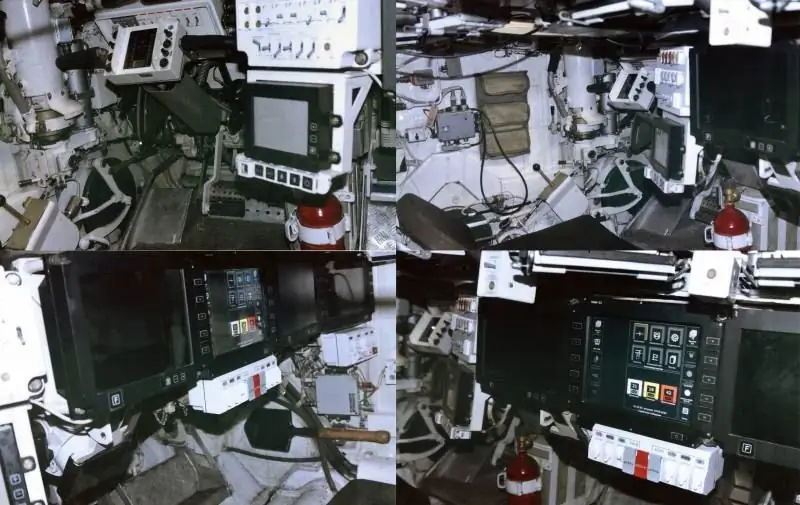
In the XXI century, it became possible to radically improve the capabilities of the crews of armored vehicles for orientation in space and the search for targets. High-resolution video cameras, high-performance night vision devices, and thermal imagers have appeared. Nevertheless, there is still a certain skepticism regarding the radical strengthening of the capabilities of domestic armored vehicles in terms of observation and reconnaissance of targets. To detect targets, it still takes a significant amount of time to turn observation devices, with the subsequent aiming of weapons at the target.
Perhaps, there is progress in the conceptually most advanced T-14 tank on the Armata platform, but questions arise about the capabilities of all-round cameras, the presence of night vision channels in their composition, speed and guidance controls for observation devices.
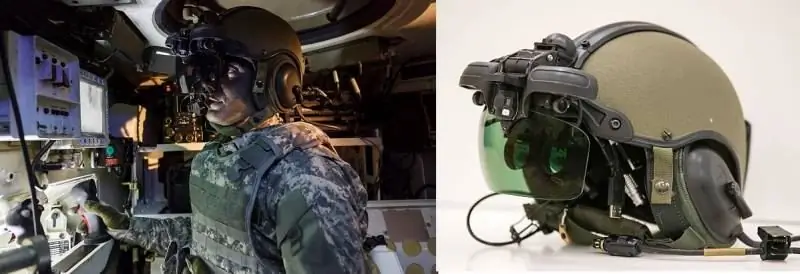
An extremely interesting solution looks like the IronVision helmet project of the Israeli company Elbit System. Like the helmet of the pilot of the fifth generation American fighter F-35, the IronVision helmet will allow the crew of the armored vehicle to see "through" the armor. The helmet provides the crew with a high-resolution color image that makes it possible to distinguish objects both in the vicinity and at a distance from the armored vehicle.

It is necessary to dwell on this technology in more detail. The problem of implementing "transparent armor" is that it is not enough to hang the armored vehicle with video cameras and put on a helmet with displays or a projection of a picture into the pilot's eye on the pilot. The most sophisticated software is needed that can "stitch" information from neighboring cameras and mix in real time, that is, overlay layers of information from different types of sensors. For such a complex software, an appropriate computer complex is required.
The total size of the source codes of the F-35 fighter's software exceeds 20 million lines, almost half of this program code (8.6 million lines) conducts in real time the most complex algorithmic processing for gluing all the data coming from the sensors into a single picture of the theater of combat action.
The on-board supercomputer of the F-35 fighter is capable of continuously performing 40 billion operations per second, thanks to which it provides multitasking execution of resource-intensive algorithms of advanced avionics, including processing of electro-optical, infrared and radar data. The processed information from the aircraft sensors is displayed directly into the pilot's pupils, taking into account the rotation of the head relative to the aircraft body.
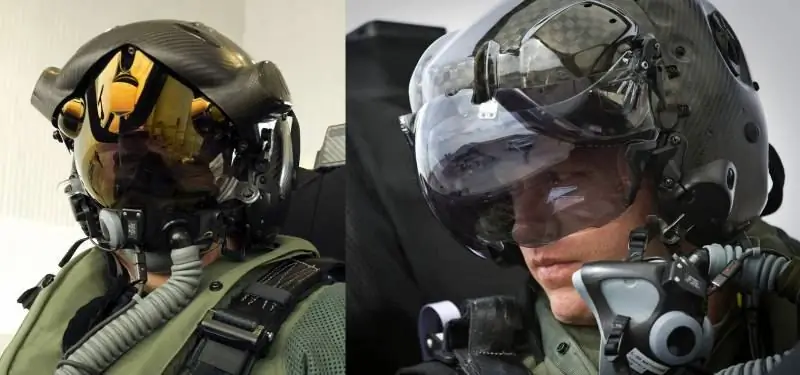

In Russia, new-generation helmets are being developed as part of the creation of the fifth generation Su-57 fighter and the Mi-28NM "Night Hunter" helicopter.
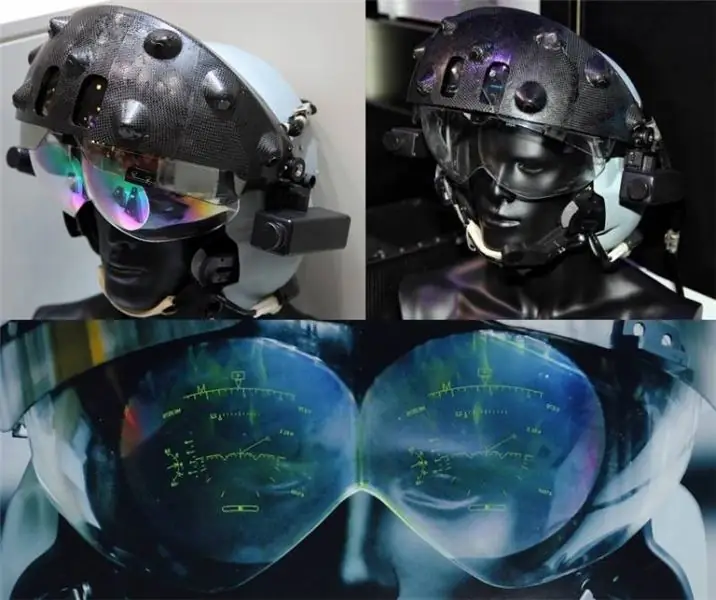
Based on the available information, it can be assumed that a technically promising Russian pilot's helmet is capable of displaying graphic information, but at the same time it is primarily focused on displaying symbolic graphics. The quality of the image displayed from optical and thermal imaging reconnaissance means will probably be inferior to the quality of the image displayed by the F-35 pilot's helmet, taking into account the difficulties that are required to configure the latter. Fitting an F-35 pilot's helmet takes two days, two hours each, the augmented reality display must be located exactly 2 millimeters from the center of the pupil, each helmet is designed for a specific pilot. The advantage of the Russian approach is most likely the ease of adjustment of the helmet compared to its American counterpart, and the Russian helmet is likely to be used by any pilot with minimal adjustment.
A much more important issue is the ability of the combat vehicle software to provide seamless "gluing" of the image coming from the all-round cameras. In this regard, Russian systems are most likely still inferior to systems of a potential enemy, providing an image display in a helmet only from observation devices located in the nose of the aircraft. However, it is possible that work in this direction is already underway in the relevant institutions.
How much is the demand for this type of equipment as equipment for armored combat vehicles? Ground combat is much more dynamic than air combat, of course not from the point of view of the speed of movement of combat vehicles, but from the point of view of the suddenness of the appearance of threats. This is facilitated by the difficult terrain and the presence of green spaces, buildings and structures. And if we want to provide crews with high situational awareness, then aviation technologies must be adapted for use on armored vehicles, and the above example of the IronVision helmet from the Israeli company Elbit System clearly shows that their time has already come.
When using image display systems in a helmet, it is necessary to take into account the fact that a person is not an owl and cannot turn his head 180 degrees. If we use an image from sensors located in the nose of an airplane or helicopter, this is not so critical. But when providing the crew with all-round visibility, it is necessary to consider various options for solutions that reduce the need for crew members to twist their heads to maximum angles. For example, compressing an image into a kind of 3D panorama, where when the head is turned 90 degrees, the image is actually rotated 180 degrees. Another option is the presence of buttons for quick change of direction - when you press one of which, the center of the image shifts to the top / side / back hemisphere. The advantage of digital image display systems is that several options for controlling the view can be implemented, and each member of the crew of the armored vehicle will be able to choose the most convenient method for themselves.
The main method of aiming weapons at a target should be sighting. In this mode, several control algorithms can be implemented - for example, when a target is detected, the operator captures it, after which a command is given to use weapons, then the DUMV automatically turns and fires at the target. In another scenario, the DUMV performs a turn and tracking the target, the operator gives an additional command to open fire.
Helmet or screen?
Theoretically, information from external cameras and other reconnaissance means can be displayed on large-format displays in the cockpit of a combat vehicle, in this case, weapon guidance will be provided by helmet-mounted target designation systems (NSC) similar to those used in the cockpits of Su-27, MiG-29 fighters, helicopters Ka-50. But the use of such solutions will be a step backward, since the convenience and quality of displaying information on large-format displays will in any case be worse than when displayed on a helmet-mounted display, and the failure of large-area displays during a battle is more likely than damage to a helmet, which will be destroyed most likely only together with the head of the carrier.

In the case of using screens as a backup means of displaying information, guidance can be carried out by specifying a point on the surface of the touch screen, in other words, to act according to the principle of "point the target with your finger."

Judging by the latest information, such panels of the Russian industry are quite capable of.
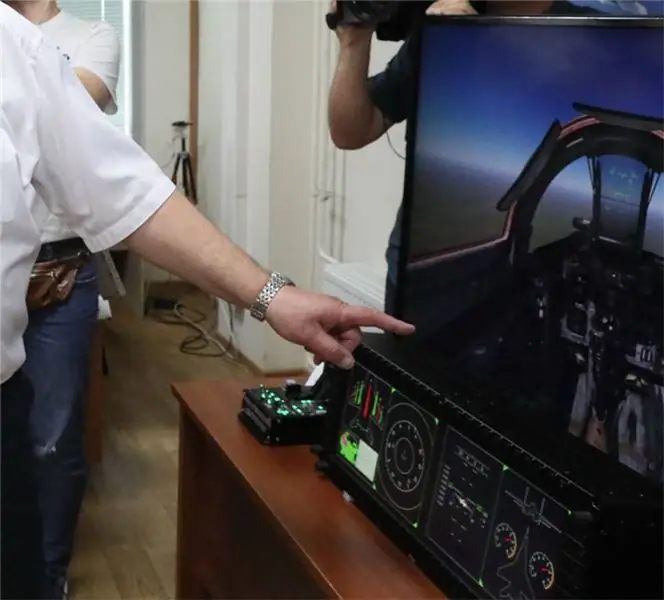
As mentioned earlier, in comparison with systems for displaying images in a helmet, displaying information on screens can be considered a less promising direction of development. On the example of the development of instrument panels of airplanes and helicopters, one can see that liquid crystal screens have coexisted with mechanical indicators for some time. Later, as people got used to the screens and became convinced of their reliability, they gradually began to abandon mechanical indicators.
A similar process can happen in the future with screens. As the technologies of helmets with the ability to display images are improved, the process of setting them up is simplified and automated, a complete rejection of displays in the cockpit of military equipment is possible. This will optimize the ergonomics of the cockpit, taking into account the freed up space. From the point of view of image output redundancy, it is easier to put a spare helmet in the cockpit and make a backup line to connect it.
Neurointerface
Currently, technologies for reading brain activity are rapidly developing. We are not talking about mind reading now, first of all, these technologies are in demand in the medical field for people with limited mobility. Early experiments involved the introduction of small electrodes into the human brain, but later there were devices placed in a special helmet, and allowing you to control a prosthesis or even a character in a computer game.
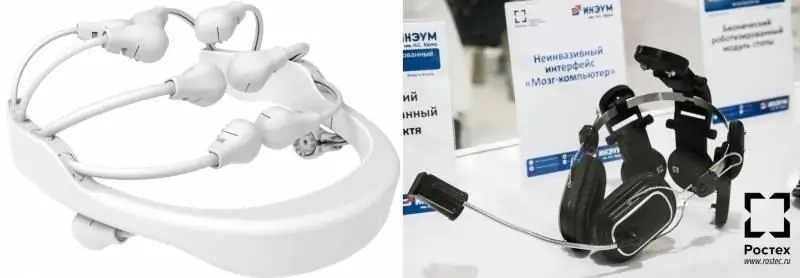

Potentially, such technologies can have a significant impact on the control systems of combat vehicles. For example, when the distance to the observed object changes, a person refocuses his eyes intuitively, without additional mental or muscular efforts. In an imaging helmet, brain sensing technology can be used in conjunction with pupil tracking technology to instantly change the magnification of the targeting devices according to the operator's “mental” intuition. In the case of using high-speed drives for guiding reconnaissance means, the operator will be able to change the field of view as quickly as a person can do, simply by looking around.
Output
The combination of DUMV with high-speed guidance drives and modern information display systems in helmets of armored vehicles, with aiming weapons with a glance, will allow armored vehicles to gain previously unavailable situational awareness and the highest reaction rate to threats.






